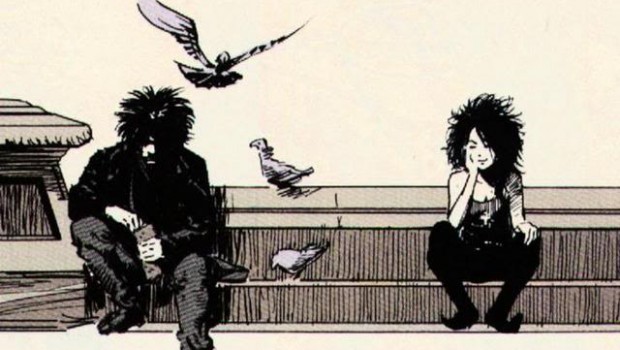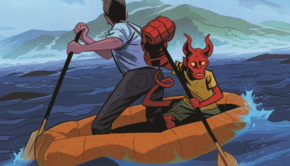The Sandman, Revisited
I recently re-read The Sandman, Neil Gaiman’s updated take on the classic DC Comics hero, which truth be told, has almost nothing to do with the original Sandman aside from the name (though he does make appearances). If you haven’t read this series, you’re missing out on quite a bit — it was a pretty epic and groundbreaking series, from the art, to the stories, to the subtext and referencing of all sorts of film, literature, and mythology. The Sandman was part of DC’s Vertigo run for the most part, and became one of Vertigo’s most popular titles, also winning a ton of awards. It attracted a large audience, many of whom were actually non-comic book readers, which was quite a feat for the time.
The Sandman is a story that spans time and space, featuring a tall, pale ‘Sandman’ with many names that controls the realm of dreams. At the start of the story, he has been captured by an occult ritual and forced to live as a powerless prisoner for a generation. This wrecks havoc with dreams in the real world, and when The Sandman (a.k.a. Dream) gets out, we expand his universe as he puts the dream realm back together. Dream moves forward as a changed entity in his adventures, having changed his outlook during his imprisonment. Even Eternals can change, I suppose.
While many of the stories take place in modern times and follow Dream and the other eternals as main characters (like his siblings Death, Desire, etc), the brilliance of the story that struck me when I first read it years ago, was that many of the tales were short stories that could take place anywhere, anytime. Sometimes they feature The Lord of Dreams; sometimes he is a bit player in the story of another well-devised character. Sometimes you follow the mundane humans, sometimes you delve into fantastic realms like Hell or Asgaard, and occasionally, groups like The Justice League make appearances. The book leans on works of the past (including a great character based on G.K. Chesterton), but also combines the present, making it one of the most intertextual works around. In many ways, it is like a dream.
And this intertextuality and dreamlike imagery is continued in the art itself, which is nothing short of amazing. Sometimes it looks like regular comic book art, other times you get insane collages of cut and paste style backgrounds, creating moods from contentment to the absolute darkness of the soul. I’m more of a story guy and I leave the art to those who know more about comic art, but what I can say is that the art on The Sandman complements the story on a level few others can reach.
This isn’t really a review per se, more of a recommendation — and an excuse for me to gush about The Sandman. It was even better than I remembered it. If you haven’t read this gem, you’d better get on it. It leaves you with not only some incredibly entertaining stories, but also bigger questions about life, death, and dreams.














